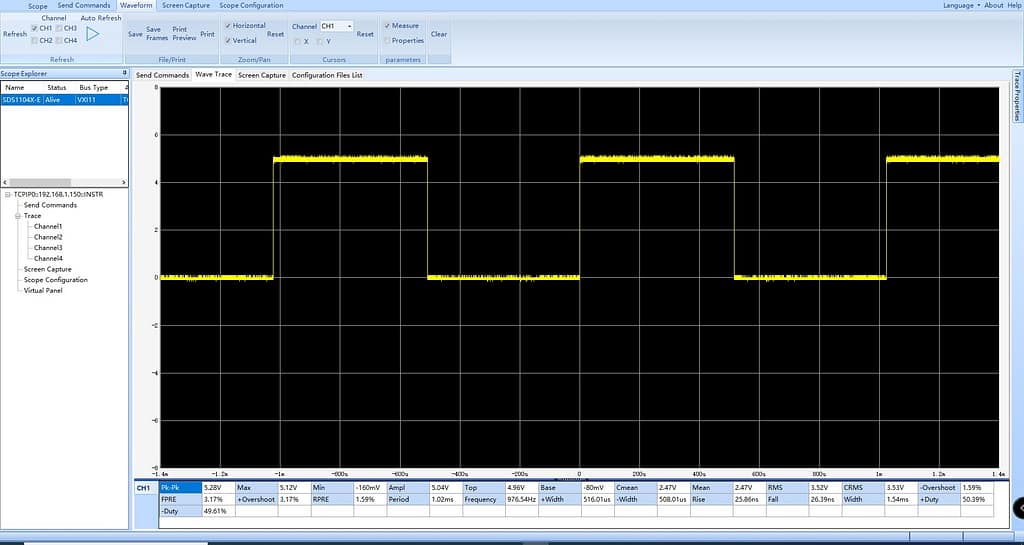analogWrite will never go below 0V or above 5V. It will be a square wave with a certain duty cycle of 0 to 100 %.. Once I get my oscilloscope I will post pictures.
127 : 50%: 05050505050505….
The commands I used were different than what I will use with Arduino. Arduino does have analog pins. They also have a digital pins with a ~ (tilde) next to them for PWM. You can use analogWrite command. Now the difference is Arduino uses 0 to 255 or an 8 bit value for PWM.
0 = low = 0 volts
255 = high = 5V volts
To do a 50% duty cycle you will use 127, which is about 1/2 of 255. My example will use pin ~9. I guess you could use 128.
int ledRed = 9;
int dutyCycle = 127;
void setup() {
analogWrite(ledRed, dutyCycle)
}
Checkout my ard_motor_pwm project in the menu for a short video.




